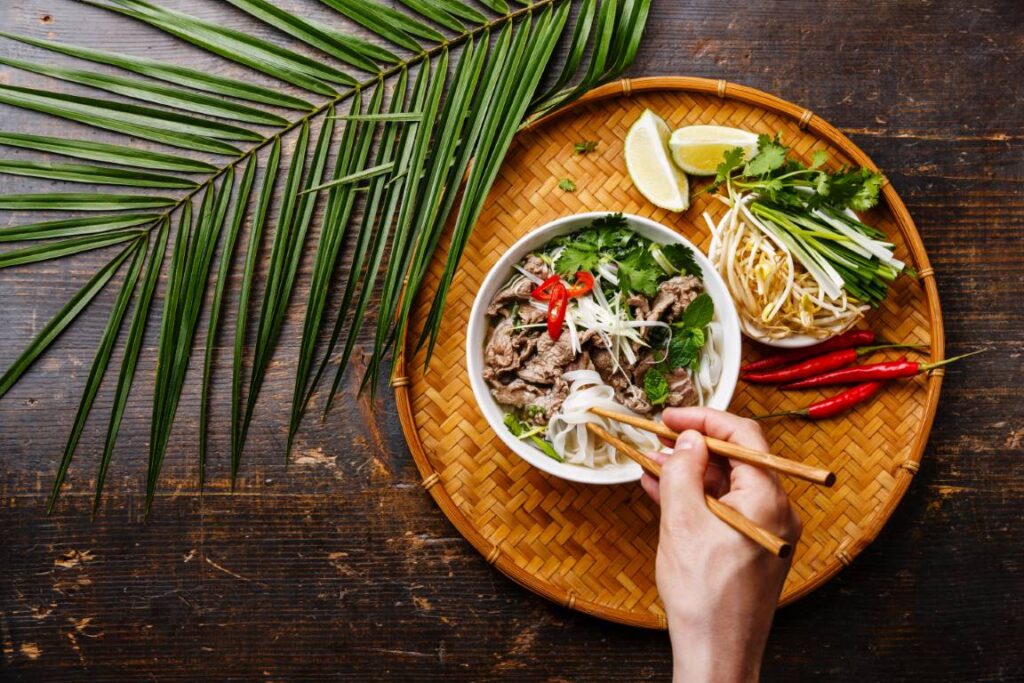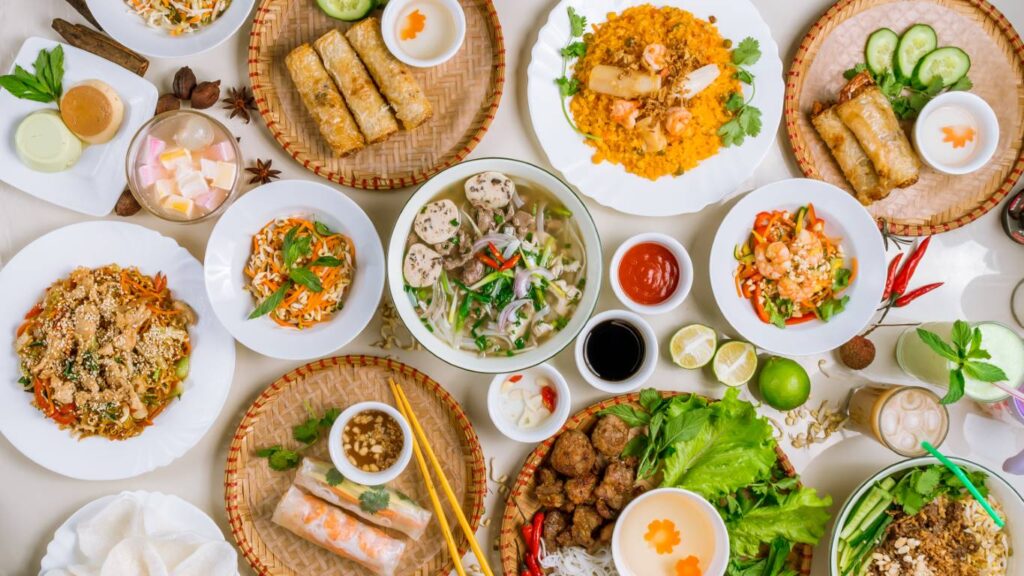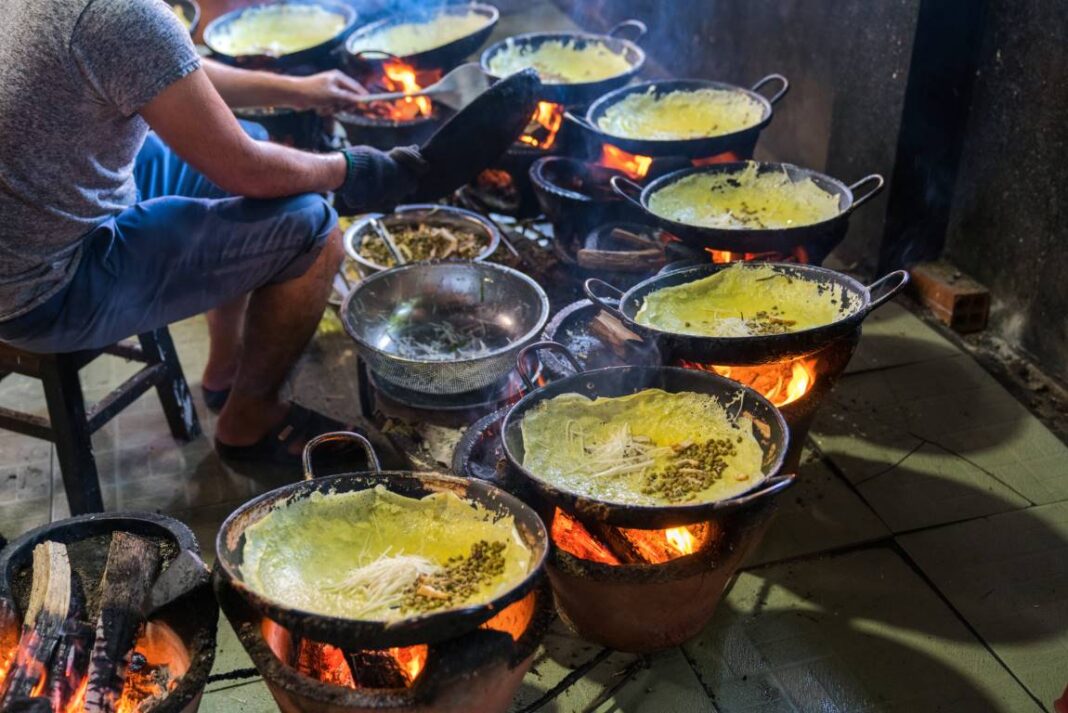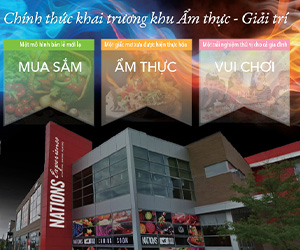Cuisine, simply understood as eating, not only meets the basic requirements of people but reflects the rich history of a country. Dishes speak to the life and people of that period and land. Discovering a country’s cuisine is one of the fastest ways to understand its culture.
Vietnamese food is influenced by history and geography. Turning points in history, along with geographical features, have created a diverse and rich cuisine.
Historical features
Vietnam has been tens of thousands of years in making and the time of nation building is more than 4,000 years.
From the Kinh Duong Vuong period (2919 BC – 2792 BC) to the Hong Bang period (?- 258 BC), about 2,661 years, there were no historical books that recorded culinary culture. However, folklore legends depict some Vietnamese dishes that have their origins in ancient times, including bánh chưng and bánh dày. These traditional cakes are still popular. Bánh chưng is considered the element that creates the flavor of today’s Vietnamese Lunar New Year – “Thịt mỡ, dưa hành câu đối đỏ / Cây nêu, tràng pháo, bánh chưng xanh” (Fat meat, onion pickle, red couplets / Lunar New Year pole , firecrackers, green bánh chưng). Based on the legend of Bánh Chưng – Bánh Dày, it seems these cakes have existed for 4,000 years proving the survival power of a national dish.
Picture 1: Vietnamese bánh chưng. Photo: Toplist.vn
Vietnamese cuisine is influenced by Chinese, French, Indian and Southeast Asian traditions, all absorbed into the national identity.
Natural geographical features
An agricultural country with a tropical climate (including monsoons), Vietnam has four-season crops that are rich in vegetables, tubers and fruits. The long coastline, along with many rivers, creeks and streams, is a rich source of fish and seafood. The climate is also suitable for livestock and poultry farming.
The country is divided into three distinct regions: North, Central and South. The geographical, cultural, ethnic and climate characteristics determine the specific characteristics of the cuisine of each region. The North has a four-season climate, the Central is hot and sunny, the South has good land, abundant produce, and food resources. Each region has its own processing methods, creating distinctive dishes.

Vietnamese Food Culture:
Inspiring
The way food is prepared, presented, eaten, and served has created the diversity in the country’s cuisine.
According to historian Hãn Nguyên Nguyễn Nhã, Vietnamese cuisine has nine characteristics:
Diversity sociability
Vietnam has 54 ethnic groups. Each ethnic group has its own culinary culture but often their dishes influence each other as brothers and sisters in the same house.
Vietnam is a wet rice civilization. Rice is a main dish and almost always present at family meals in all regions. There are also many rice-based dishes and ingredients, such as bún (vermicelli), phở, bánh canh, and bánh đa, which have become specialties in many provinces and cities.
Low fat properties
Vietnamese dishes are almost all low in fat and do not use as much oil as Chinese food. Nor do they use as much meat as Western food. The most commonly used animal proteins are pork, beef, chicken, geese, duck, shrimp, fish, crab, snail, mussels, and oysters.
Many vegetables, tubers and fruits are boiled, fried, pickled, or cooked in soup. An example is nộm, sweet and sour mixed vegetables.
Richness of flavor
Vietnamese cuisine blends many auxiliary ingredients, including spices, to create flavorful dishes that are not too hot, fatty, or sweet. For example, braised fish will have a lot of fish sauce and pepper. Bitter melon soup is good with a little fish sauce and grilled meat is marinated with many rich spices.
Additional ingredients added to dishes include:
- Many herbs such as scallions, dill, marjoram, perilla, and basil.
- Pepper, lemongrass, garlic, chili, ginger, lemon, kumquat, and chives.
- Fermented sauces – fish sauce, vinegar, and mẻ or cơm mẻ which has a distinctive sour and aromatic taste, usually made from cold rice or vermicelli and originating in the South.
Each dish has its own suitable dipping sauce. If you eat bún măng vịt (duck meat with bamboo shoots), you must dip it in ginger fish sauce. If you eat bánh xèo (Vietnamese pancakes), you use a sweet and sour fish sauce. And if you eat bún đậu (tofu and noodles), you dip it in shrimp sauce.
Many textures and flavors
A Vietnamese meal is a combination of many dishes with various textures and flavors.
This synthesis is evident in Vietnamese hot pots. A hot pot always has a variety of ingredients, from protein (meat, shrimp, fish, squid, crab) to vegetables and tubers. A combination of many flavors (sour, spicy, salty, bitter, sweet) is also common. For example, cơm tấm (a broken rice dish) has the salty taste and aroma of grilled meat, the fat of the omelet, the sour taste of melon, and a spicy fish sauce.
In particular, nước mắm (fish sauce) is a special feature that other countries, especially Western countries, do not have. There are many different types that are matched to each accompanying dish. For example, with bún chả giò (vermicelli with spring rolls) is served with sweet and sour fish sauce with additional pickles. With duck or chicken dishes (such as duck meat with bamboo shoots, duck porridge, or chicken porridge) comes a ginger fish sauce. Grilled or dried fish dishes are matched with a tamarind fish sauce.

The Vietnamese way of eating affects all senses. There is the sweet aroma of the dishes being served, the sight of the harmonious colors of the table, the delicious taste of food, the sound of crunching. Vietnamese people like to smack their lips when drinking good tea and when drinking good wine, they like to say “khà.” Sometimes even the sense of touch happens when using their hands to tearing food such as boiled chicken or duck.
Tasty and healthy
Dishes and flavors are combined for a reason. Not only are they delicious, but also healthy. Vietnamese people focus on this. The spices must be mixed in a harmonious way. Dishes that might cause a cold stomach (cold element) must have hot spicy spices (heat element) and vice versa. Hot (warm) ingredients must be cooked with cold (cool) ingredients. This is the law of yin-yang balance in Vietnamese cuisine.
Deliciousness is the top requirement in cuisine, and wholesomeness is sometimes overlooked. In the Vietnamese culinary system, there are few dishes that are very sophisticated, stewed and simmered like Chinese cuisine. Nor are they inclined to highly aesthetic presentation like Japanese cuisine. It is more about mixing. Subtly mixed spices make the dish delicious, and chewy, crunchy ingredients are used that are enjoyable and not really fatty. For example, bamboo shoots, chicken wings, and animal viscera.
Use chopsticks
Chopsticks are used from a young age. For most dishes – from braised to stir-fried, from fried to grilled – Vietnamese people use chopsticks.
Vietnamese chopsticks are used in a very flexible way with many different functions – picking, tearing, sawing, beaming, mixing, dredging, scooping and especially helping to pick up morsels that are out of reach. Plus, there is the art of picking up and not dropping the food.
Community, collectivism
Community is very evident in Vietnamese culture, including with food. At family meals, from big to small, generations gather to eat together. Soups and stir-frys are served on a circular tray, with a bowl of dipping sauce placed in the center of the tray. The food and sauces are all eaten together.
Hospitality
Vietnamese people are hospitable from North to South. And they often invite others to join their meals. The invitation shows respect, courtesy, and respect.
Making meals on a tray
Vietnamese people prepare a tray of rice for each meal. The tray will also have soup, stew, stir-fry.






